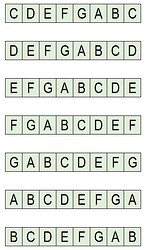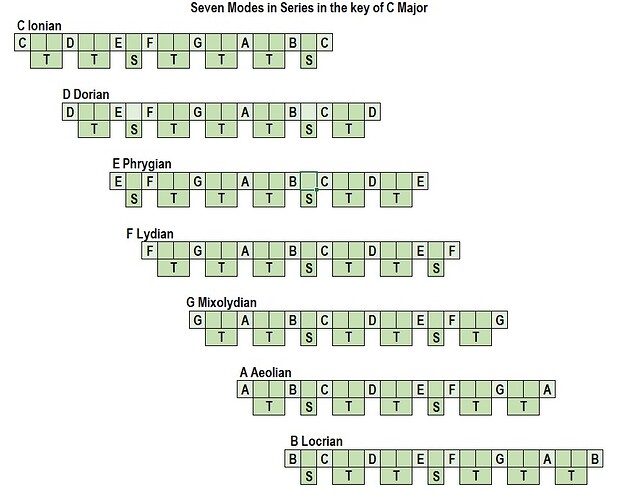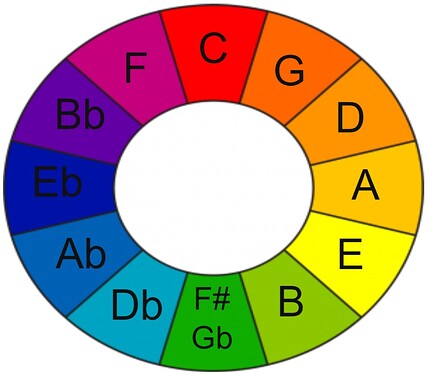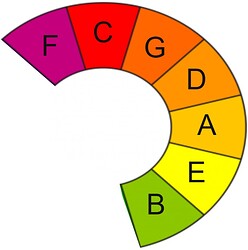The order of the modes
The modes are given ordinal names to match their relative position from the parent major scale, to match the scale degree from which they take their start point and root note.
Perhaps there is some special something which can be discovered here that reveals the reasons why so many lessons on modes introduce them in series.
Perhaps.
Once again, for simplicity, using the C major scale.
Against the ordinal for each mode we will see listed any scale degrees they contain that are not natural notes (i.e. flats or sharps).
-
1st = C Ionian containing no sharps or flats
-
2nd = D Dorian containing b3 and b7
-
3rd = E Phrygian containing b2, b3, b6 and b7
-
4th = F Lydian containing #4
-
5th = G Mixolydian containing b7
-
6th = Aeolian containing b3, b6 and b7
-
7th = Locrian containing b2, b3, b5, b6 and b7
Apart from the counting up from the 1st to the 2nd to the 3rd and on, where is the logic in any of that?
Is there any sort of pattern or logic to the number and placement of sharps and flats from the 1st mode through to the 7th mode?
None that is readily apparent at first glance.
Those (mainly) flats and the one sharp seem to be a random and haphazard mix.
There is something familiar and maybe useful. Looking at the 3rd scale degrees of each, the type of mode runs:
Major, minor, minor, Major, Major, minor and weird!
To determine this we simply look to see whether a mode has a b3 or note. If it does not, it must have a natural (major) 3 so is a major type of mode. If it does it must be a minor type of mode. The last, Locrian, has a b3 but much else going on that makes it a little unique and, dare I say, awkward.
Aha! The diatonic chords from a major scale follow the order:
Major, minor, minor, Major, Major, minor, diminished. That certainly seems to match what we have here in the type of modes. Perhaps this is the power, the goodness, the usefulness that people find when presenting and using modes in series. Many people do seem to use the M, m, m, M, M, m, d pattern as a peg to hang the modal types on to and as an aide-mémoire. If it works then all good.
But, for the aural / musical reasons already stated – the missing modal magic - and due to misgivings over those unanswered questions, I am going to move past this view of modes for now. I am going to look at modes from another view, which is modes in parallel. Doing so in hopes that it rounds out the understanding, gives deeper insight and addresses some further uncertainties.
![]()
![]()
![]()



















